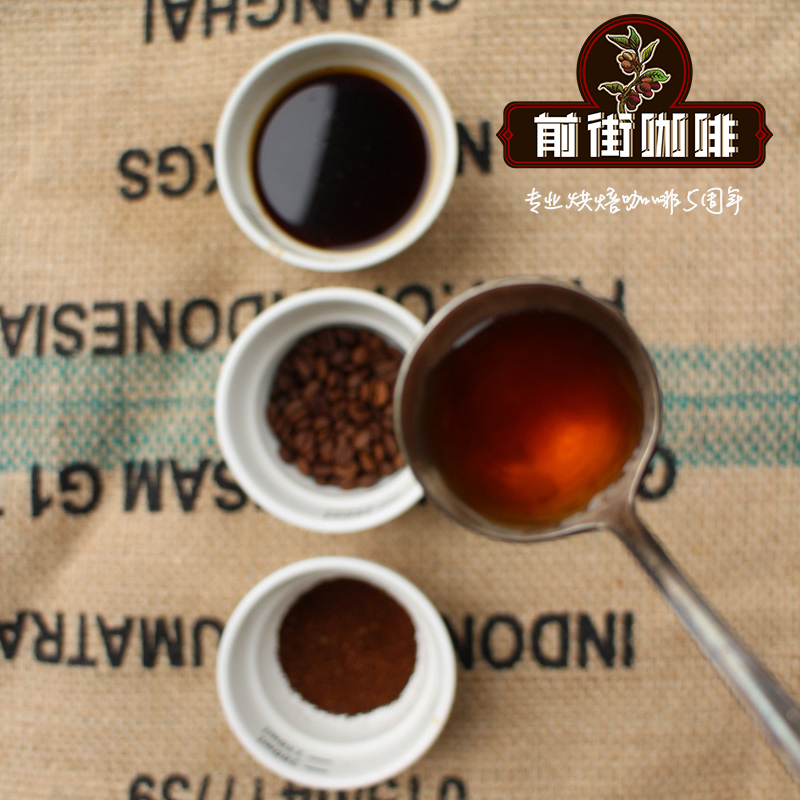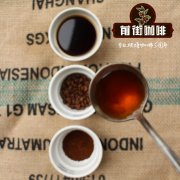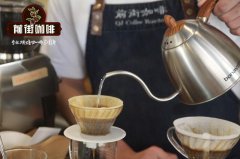What is the variety of East Timor coffee beans-Tim Timor? What is the flavor and taste of East Timor coffee?

Professional coffee knowledge exchange More coffee bean information Please pay attention to coffee workshop (Weixin Official Accounts cafe_style)
East Timor Coffee Bean-Tim TimorWhat kind of coffee bean is TimorCoffee? How does East Timor coffee taste and taste? How to brew?
Hibrido de Timer (or Timer hybrid) coffee is Coffee arabica and C. Canephora (Robusta coffee) is the result of spontaneous interspecific hybridization. Arabica coffee accounts for more than 60% of global coffee production and is the source of dozens of specialty varieties due to its superior quality. Unfortunately, it is also very susceptible to coffee leaf rust (a fungal infection caused by Hemileia vastatrix) and other diseases. Robusta coffee accounts for most of the rest of the world's products and, although of lower quality than Arabica coffee, has the advantage of being resistant to many diseases, including rust. Hibrido de Timer may be derived from a single Robusta female plant, with disease resistance, but its quality is closer to Arabica. These characteristics make it popular among coffee growers, growers and drinkers alike.
East Timor Coffee is a small independent island located on the eastern edge of the Indonesian archipelago, usually mixed in two large growing areas, Maubesse and Ermera. This means crop quality fluctuates from year to year because buyers have no way of knowing what's in each package. When coffee is recognized and isolated by growing villages (such as Timor Atsabe), the cup can be rich, nutty, and very aromatic. This is a hard man to find but worth the effort for a real Javatrekker!
Hibrido de Timor was discovered in 1927 on a coffee plantation (various Arabica coffees) established in 1917 in what is now East Timor. Coffee farmers in Timor began growing hibrido de Timor in the 1940s. In the late 1950s and 1960s, seeds were spread to other Indonesian islands and then to research facilities in the coffee-producing world, where breeders crossed them with Arabica coffee to produce rust-resistant varieties such as catimor and sarchimor.
Coffee plantations were introduced to East Timor by the Portugal in 1815. However, many East Timor communities were displaced during the Indonesian invasion in 1975. As a result, much of the land was abandoned and coffee plantations have since grown, thriving in the rich mountainous environment of the country.
Despite the obvious importance of hibrido de Timor to the global coffee industry, little has been done on the geographical range and genetic characteristics of the original plants in East Timor. Part of the reason is that many of the plantations where this genetic hybridization took place were abandoned after the Indonesian invasion in 1975 and are now semi-wild. Coffee is the basis of the economy of East Timor (almost half of the population depends solely on coffee for their livelihood) and dozens of other developing countries. The ability of coffee growers and growers in these countries to combat leaf rust and other diseases-likely to become more severe and prevalent due to climate change-may depend heavily on genetic resources from Timor.
Most coffee in East Timor is wet-processed. In rural homes, beans are roasted in pans in open stoves and then ground to a powder. Then put the powdered coffee in a cloth filter and pour boiling water over it. On the other hand, in the capital, Dili, mass production and ready-to-eat coffee are gaining popularity. This, combined with the lack of interest among young people in becoming coffee growers, poses a threat to the coffee industry in East Timor. Thankfully, the young baristas expressed interest and pride in the high quality Timor coffee.
Another factor that makes East Timor stand out in coffee is that it has its own hybrid vehicle-Timor Hybrid-dating back to the pre-World War II period. Timor Hybrid (commonly known as Tim Tim or HDT), born from spontaneous mating of Robusta and Arabica plants, is a highly disease-resistant and high-yielding variety that is now cultivated worldwide. Timor hybrids are also the backbone of the famous Catimor and Sarchimor varieties.
Coffee production conditions in East Timor are unsatisfactory in many ways. The arid climate and short rainy season have further contributed to the natural deterioration of soil fertility in many coffee regions of the country. Nevertheless, the country is rapidly improving quality and productivity. Most of the coffee in the country is passive organic coffee because fertilizers and pesticides have never been introduced and 100% of the coffee is shady. Moreover, even the smallest improvements can have a huge effect. There are several programmes, many funded by international development organizations, which will fundamentally change the way coffee is harvested and processed in East Timor.
Typical harvest time: May to October
Main coffee regions: Maubesse, Aifu, Ermera, Liquica, Aileu and Ainaro
Flavor: Dark chocolate, cola and spice flavours
Certification: Organic, Fair Trade
Processing: washing
Acidity and brightness: moderate acidity, slightly sweet
Grape variety: bourbon whisky and Timor blend (Hibrido de Time)
Front Street Recommended Brewing:
Filter cup: KONO filter cup
Water temperature: 88 degrees
Polishing degree: Small Fuji Polishing degree 4
Cooking method: water-powder ratio 1:14, 17g powder, first injection of 25g water, stewing for 30s, second injection to 238g water, extraction time 2:30 s
Analysis: The ribs at the bottom of the KONO cup are not many, and the filter paper is attached to the filter cup to achieve the purpose of limiting the airflow, so that the water and coffee powder can have a longer contact soaking time in the filter cup to ensure the extraction time and extraction rate of coarse grinding. This allows the coffee powder to be fully extracted, enhances the mellow taste, and makes the taste more concentrated.
Important Notice :
前街咖啡 FrontStreet Coffee has moved to new addredd:
FrontStreet Coffee Address: 315,Donghua East Road,GuangZhou
Tel:020 38364473
- Prev

What is the growing environment of coffee beans in East Timor? How many kinds of coffee are there in East Timor?
Professional coffee knowledge exchange more coffee bean information please follow the coffee workshop (Wechat official account cafe_style) how is the growing environment of coffee beans in East Timor? How many kinds of coffee are there in East Timor? In 1994, after years of conflict, the coffee industry in East Timor began to emerge. With the help of NCBA and USAID, coffee farmers formed the cooperative CooperativaCafTimor
- Next

Introduction to the characteristics of Hawaiian Coffee beans _ which Hawaiian Coffee tastes better _ Hawaiian Coffee recommendation
For more information on coffee beans, please follow the coffee workshop (Wechat official account cafe_style) Hawaiian Coffee-Kona Extra Fancy is perfect in shape, full-bodied, full-bodied, well-balanced in acidity and cinnamon. Perhaps the most beautiful coffee bean in the world. Kona coffee beans from Hawaii have the most perfect appearance. Their fruits are extremely full and smooth.
Related
- Detailed explanation of Jadeite planting Land in Panamanian Jadeite Manor introduction to the grading system of Jadeite competitive bidding, Red bid, Green bid and Rose Summer
- Story of Coffee planting in Brenka region of Costa Rica Stonehenge Manor anaerobic heavy honey treatment of flavor mouth
- What's on the barrel of Blue Mountain Coffee beans?
- Can American coffee also pull flowers? How to use hot American style to pull out a good-looking pattern?
- Can you make a cold extract with coffee beans? What is the right proportion for cold-extracted coffee formula?
- Indonesian PWN Gold Mandrine Coffee Origin Features Flavor How to Chong? Mandolin coffee is American.
- A brief introduction to the flavor characteristics of Brazilian yellow bourbon coffee beans
- What is the effect of different water quality on the flavor of cold-extracted coffee? What kind of water is best for brewing coffee?
- Why do you think of Rose Summer whenever you mention Panamanian coffee?
- Introduction to the characteristics of authentic blue mountain coffee bean producing areas? What is the CIB Coffee Authority in Jamaica?

